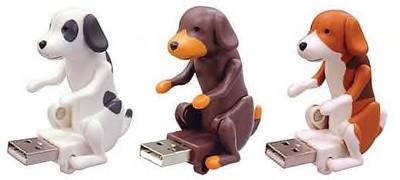
You wouldn't leave a young child alone in the house, would you? Then why would you leave a puppy or young dog in the house for hours at a time? Many people do it and it's not fair to the dog or the family.
Unless you are able to make some arrangements for the dog to be let out and have some social contact, at the very least every few hours, then you are sentencing him to solitary confinement and considerable discomfort.
Dogs are pack animals and they crave companionship. All dogs need social contact and exercise. If they are deprived of any of these, bad behavior will almost certainly occur - and it's not the fault of the dog.
Boredom and separation anxiety will manifest itself in destructive behavior and soiling of the house. Just ask yourself, how long could you tolerate being alone, with no books, no TV, no personal contact and no room to move around? How many trips to the bathroom do you make in the course of a day?
Putting the dog in a crate is only part of the solution. This will prevent any destructive behavior such as chewing furniture or personal possesions but won't solve the puppy's psychological problems, or his need for toilet breaks.
If the dog has been properly trained for the crate, he will have come to regard it as his safe "den" and will feel much more secure and comfortable in this environment but he will still need adequate and frequent toilet breaks.
It's necessary to consider the breed characteristics. Some breeds are more dependent on human company than others and this can be a big influence on their reaction to prolonged separation. Similarly, the more active breeds will suffer far more from long periods of confinement.
Imagine a border collie, shut up for long periods with no mental stimulation and no exercise! In no time at all, you'll have a very neurotic dog indeed.
So, if your dog has to be alone in the house for large parts of the day, as a minimum you need;
1) a place (probably a crate) where he can feel secure and comfortable with some toys and familiar objects;
2) some arrangement, possibly with a neighbor or friend who is familiar with the dog, for periodic breaks for toilet and a little exercise;
3) provision of drinking water, preferably just before the toilet break; and
4) some stimulation, such as a radio talk show or some music.
Toys can be a great distraction and comfort for your dog. There is a huge choice of toys which can keep him amused and allow him to chew to his heart's content. Buy a good number of toys, which will allow you to rotate them. Some toys allow small treats to be hidden in them, keeping him interested for longer.
It is vital that your dog learns that chewing anything other than his food or his toys is a definite No. It is best to limit his chewing to those toys which are specifically designed to be safe.
Any other approach can make the dog confused. If you give him an old sneaker to chew, you can't blame him if his next choice is one of your brand new business shoes.
Some trainers advise leaving one of your old garments in the crate with the dog. If he is allowed to chew this, then he may end up with your new golf sweater. It may be better to leave a few garments near the crate but out of reach, so he can feel the comfort of your scent.
As your dog becomes more accustomed to his routine, you may feel confident in leaving the crate door open but shutting him in one room, then gradually expanding the areas he's allowed in (making the bedrooms last, or not at all).
At the very minimum, you should ensure that he gets some freedom and exercise before everyone leaves for the day and when you return home, that he gets plenty of play and more exercise (with some fun training thrown in).
Source: Ken Charles
Thursday, February 28, 2008
Is Your Dog Alone All Day
Labels:lilyruths dogcents,
adoption of dogs,
dog news,
fund raiser,
link,
pet,
Pictures of dogs,
virtual dog
Subscribe to:
Post Comments (Atom)


 My StumbleUponPage
My StumbleUponPage




















No comments:
Post a Comment